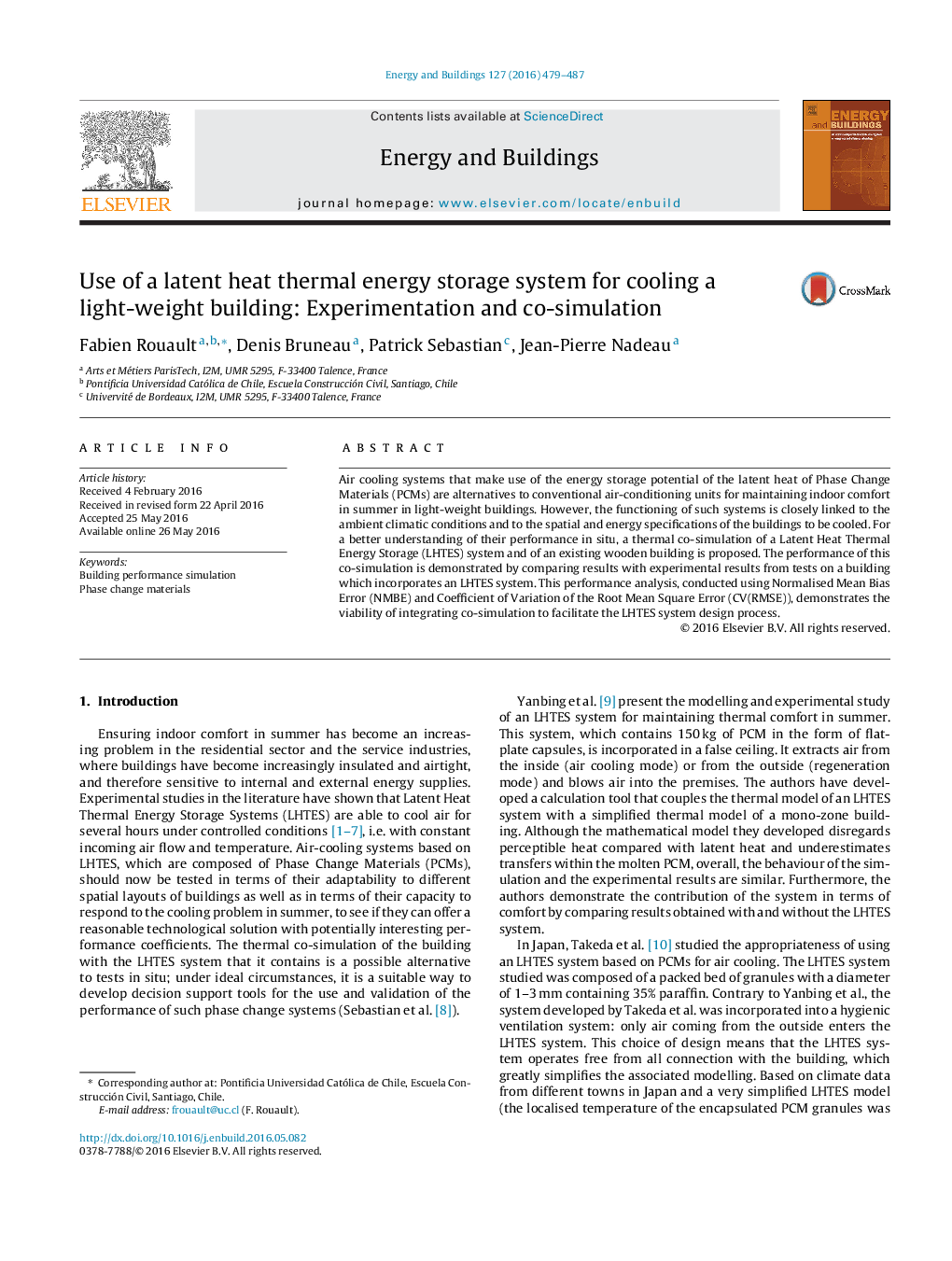| Article ID | Journal | Published Year | Pages | File Type |
|---|---|---|---|---|
| 261998 | Energy and Buildings | 2016 | 9 Pages |
•We present an experimental pilot of Latent Heat Thermal Energy Storage (LHTES) system.•We couple a thermal model of the LHTES system with a BPS software package.•We compare experimental measurements and numerical simulations to validate co-simulation approach.
Air cooling systems that make use of the energy storage potential of the latent heat of Phase Change Materials (PCMs) are alternatives to conventional air-conditioning units for maintaining indoor comfort in summer in light-weight buildings. However, the functioning of such systems is closely linked to the ambient climatic conditions and to the spatial and energy specifications of the buildings to be cooled. For a better understanding of their performance in situ, a thermal co-simulation of a Latent Heat Thermal Energy Storage (LHTES) system and of an existing wooden building is proposed. The performance of this co-simulation is demonstrated by comparing results with experimental results from tests on a building which incorporates an LHTES system. This performance analysis, conducted using Normalised Mean Bias Error (NMBE) and Coefficient of Variation of the Root Mean Square Error (CV(RMSE)), demonstrates the viability of integrating co-simulation to facilitate the LHTES system design process.
